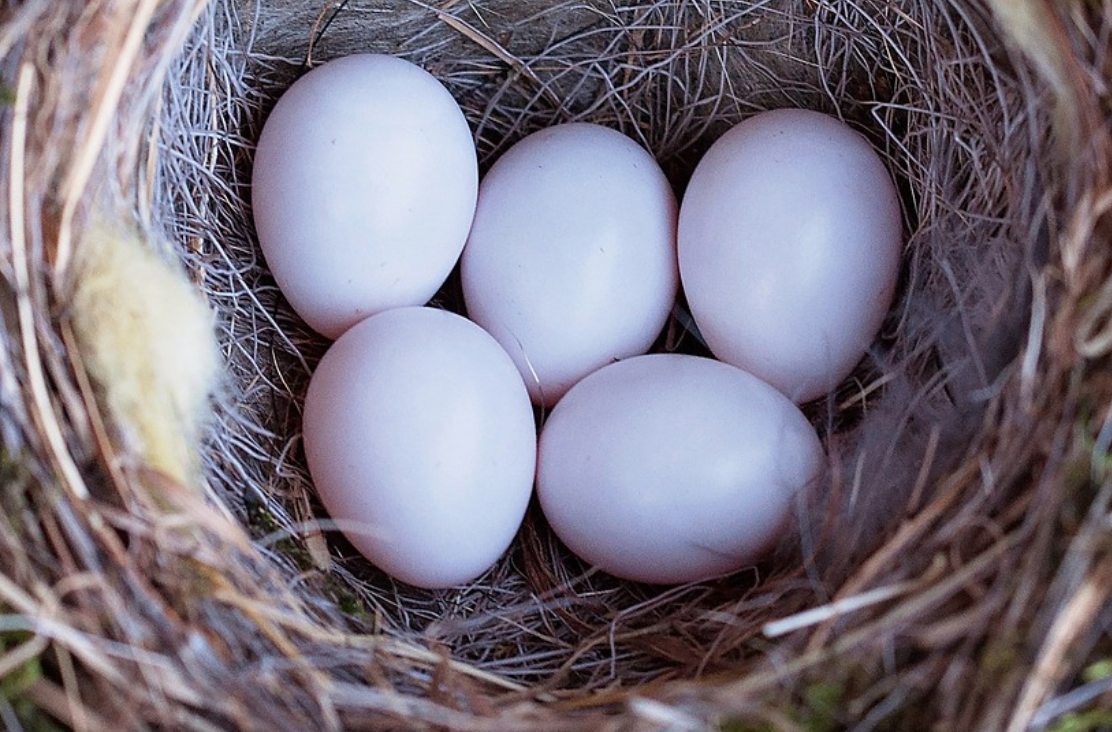Why do different bird species have differently shaped eggs?
Contributed by Bill Hamilton
What a great question! Could it be that birds nesting on cliffs evolved lopsided eggs that wouldn’t roll in straight lines (and, thus, plummet off of the cliffs to their demise)? Could it be that birds evolving larger clutch sizes developed eggs that could pack together in a nest more efficiently than round, golf ball-shaped eggs? We can find examples of cliff nesting birds with elliptical or pointy eggs and birds with large clutch sizes with non-rounded eggs that pack tight in their nests, but these observations don’t necessarily mean that either hypothesis is accurate.
A paper published in Science on June 23, 2017 asked this very compelling question, and set out to look beyond local or logical, “common sensical” explanations. Working with a data base of 50,000 bird’s eggs and information from 1400 species of birds, the research team led by Mary Caswell Stoddard of Princeton University found that egg shape was in fact most strongly correlated with a wing measurement called the “hand-wing index” (HWI).
The formula for HWI is quite simple: “Kipp’s distance” (which is the distance between the tips of the largest primary feather and the first secondary feather) is multiplied by 100 and then this value is divided by the “wing chord distance” (the distance from the bird’s carpal joint to the tip of its longest primary feather). The HWI has been shown to be related to the ability of a bird to fly long distances efficiently. It is also, very roughly, an index of the “pointiness” of a wing!
Birds that fly long distances need slender, aerodynamic bodies to go along with their slender wings. These long distance fliers, though, may also be under Natural Selection pressures to make larger, more nutrient packed eggs. How to make a larger egg but still maintain their slender body shapes is a bit of geometric conundrum. The evolutionary solution, according to this study, was to make elliptical or asymmetrically pointed eggs which would have larger volumes but no increase in overall diameters. Slender birds, then, could lay these eggs without having to give up their aerodynamic shapes!
The paper mentioned many examples of great flying species that make non-round eggs: hummingbirds are vigorous fliers and incredible long distant migrators, and they have tiny, elliptical (jelly-bean shaped!) eggs. Least sandpipers migrate from the tundra of arctic to the wetlands of northern South America, and they have pointy, asymmetrical eggs. Wandering Albatrosses, possibly the most impressive long distance flier of all bird species with individuals covering up to 75,000 miles in a single year, produce long, elliptical eggs.
At the round end of the egg spectrum the paper mentioned Eastern Screech Owls. Screech Owls live in relatively small, well defined territories and only fly short distances. There was probably, then, very little evolutionary pressure for the screech owl to have a slender body. Possibly, as a consequence of this, it never was under any pressure to make asymmetrical or elliptical eggs.
I think that it’s possible to come up with exceptions to this “strong flyer” and “elliptical egg” rule. I can think of some long distance migrators that have round eggs and some real “stay-at-home” species that have pointy eggs. The power of this Princeton study, though, was in the tremendous size of its sampling set! It was able to sort through the anecdotal examples and exceptions and find some very interesting correlations! Correlation, of course, does not mean causation, but the possible evolutionary model connecting flight ability and egg shape is very thought provoking indeed!
